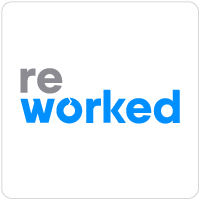Understanding the Difference Between Employee Experience and Employee Engagement
When we think of employee engagement, it’s easy to conjure ideas of all the novel ways companies have tried to make the workplace quirky and exciting. Think espresso bars and ball pit lounges, dog-friendly open offices and unlimited PTO. Initially, the thought was that breaking from strict corporate culture would improve company morale and productivity. While that is true to some extent, having more incentives doesn’t necessarily translate into long term benefits. In order to grow a business sustainably and create a culture that consistently inspires the best in your employees, it’s important to balance engagement with the overall experience.
Defining Employee Engagement
Before engagement was the buzzword du jour, being a company employee meant that you were simply there to sell a product or service and take home a paycheck. But as the workplace evolved, so did the concept of employee engagement. Companies began to realize that supporting staff with benefits and resources in their day-to-day lives turns employees into advocates.
In fact, a 2010 study by PwC found that employees most committed to their organizations put in 57 percent more effort on the job—and are 87 percent less likely to resign—than employees who consider themselves disengaged. Today, measuring employee engagement can help us understand the emotional commitment an employee has to an organization and its goals.
Make Room for Millennials
The workforce is changing. As Baby Boomers retire, Millennials are expected to make up half of the global workforce by 2020. This isn’t just a generational shift—their career priorities are different too. Millennials prefer flexible hours, frequent feedback, and less traditional corporate structures. But in order to replace the retiring workforce, companies need to think beyond engagement strategies in order to attract new talent.
Forward-thinking organizations are developing a broader, more integrated focus on the entire employee experience, bringing together all the workplace, HR, and management practices that impact people on the job. According to Deloitte, “a productive, positive employee experience has emerged as the new contract between employer and employee.”
Next Step: The Experience
While engagement takes into account an employee’s passion for their work, employee experience (EX) focuses on the reality of the job—warts and all. No matter how many parties culture club throws, how often the office is redesigned, or how many wellness incentives are offered, it’s the larger picture that comprises an employee experience. EX doesn’t focus on singular events, rather it is the sum of all the various perceptions employees have about their organizations. A positive experience is built upon a holistic ecosystem that puts employees above all.
Companies that design successfully for EX:
- Go beyond perks to engage employees or solve core business problems
- Find new ways to attract, motivate and retain employees
- Use design thinking to solve company issues
- Consider all employee perceptions (both good and bad)
Meeting the EX Challenge
Wholesale changes to an organization can be incredibly difficult to implement. Making strides to improve the employee experience takes time and persistence—a challenge met by many organizations. In the previously mentioned Deloitte survey, nearly 80 percent of executives believed in the importance of EX, but only 22 percent reported that their companies were excellent at building a differentiated employee experience. Even more surprising, 59 percent of survey respondents reported they weren’t quite prepared to address the employee experience challenge.
So how can an employer make changes to build a more positive employee experience? Consider the four steps below:
- Make it a priority. The employee experience should be a top concern for HR leaders—not just for new recruits, but for employees at all levels.
- Assign responsibility. Engage others by looking to a senior executive or team to design and deliver the employee experience.
- Avoid the HR silo. Keeping the entire team integrated will help determine which priorities need to be addressed first and will give HR insights that they might not otherwise notice from afar.
- Track your progress. Engage employees on an ongoing basis—a simple pulse survey or net promoter score can help HR and leadership understand what employees expect and value
Next Steps
Shifting focus from employee engagement to employee experience requires taking a broader look at your organization, but it’s not impossible. Look outside the walls of your organization and use resources such as Glassdoor and LinkedIn to learn more about company perception. Continue using engagement strategies already in place and find additional touchpoints along the employee lifecycle to foster a naturally positive experience. By maintaining a holistic view of your organization, you can improve the landscape for employees and customers alike.
Join us June 17th – 19th 2019 at DWX to learn more about how shifting focus from employee engagement to employee experience successfully.




